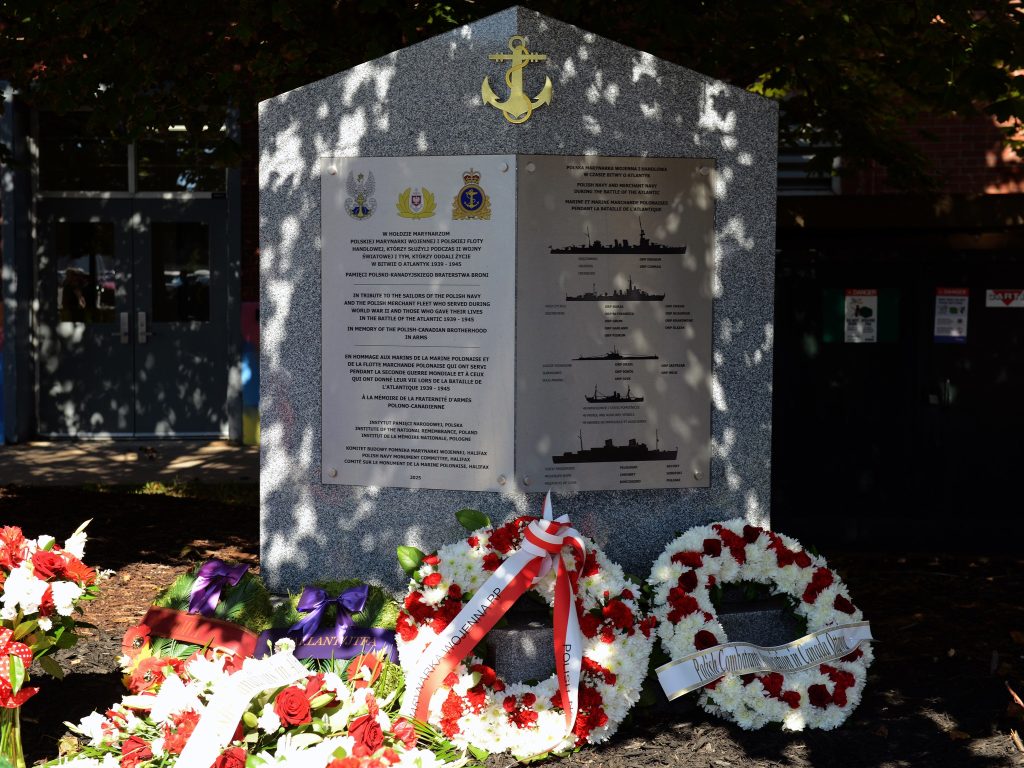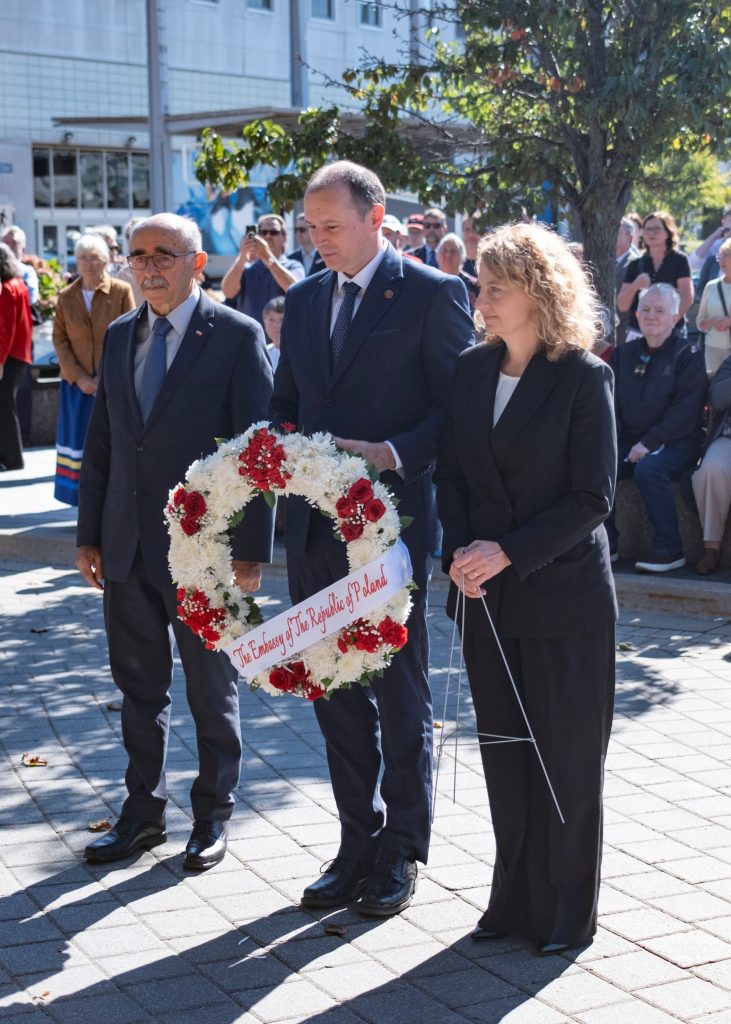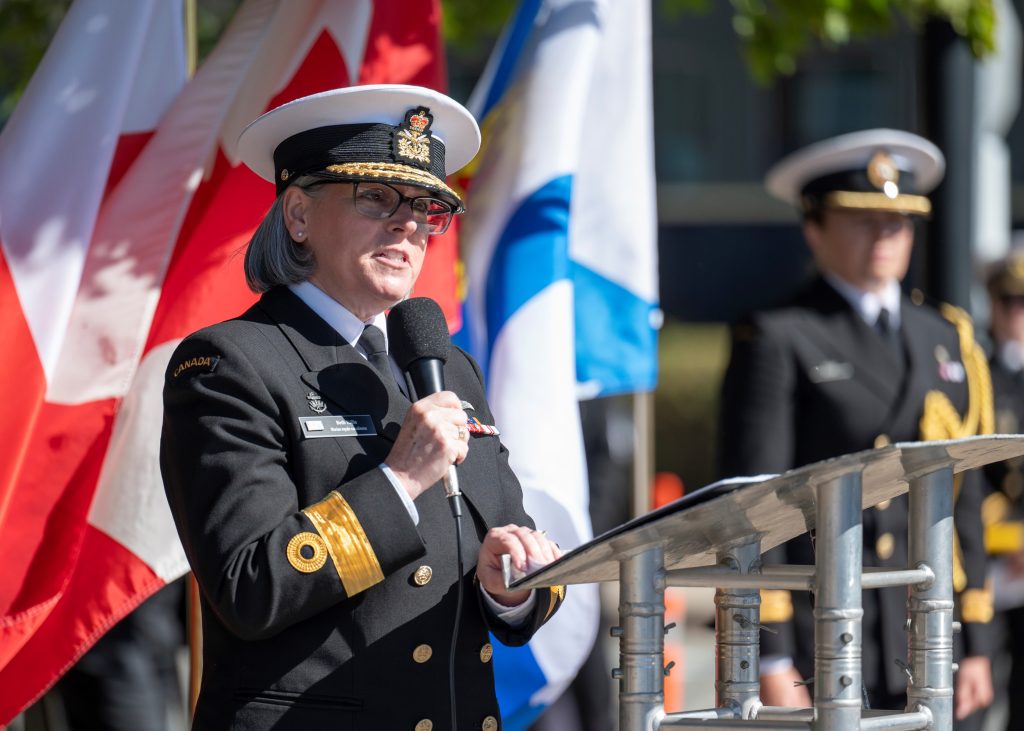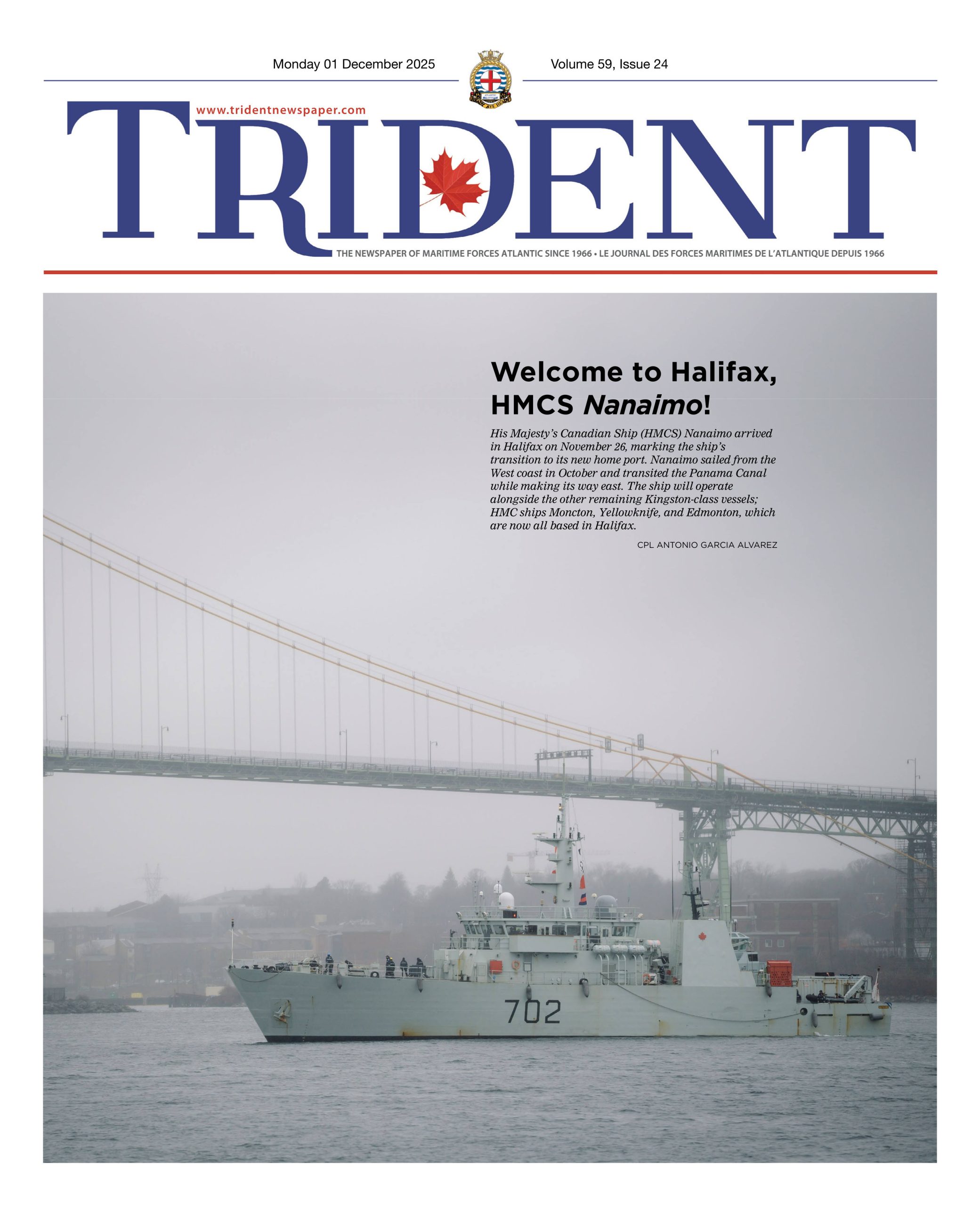
Monument honours Polish-Canadian naval ties
By Trident Staff

A new monument now standing in Halifax pays tribute to a wartime alliance that helped secure victory in the Battle of the Atlantic and forged a lasting bond between Canada and Poland.
On September 27, military and government representatives from both countries joined members of Halifax’s Polish community outside the Canadian Museum of Immigration at Pier 21 for the official unveiling.
The monument reads, in English, French, and Polish: In tribute to the sailors of the Polish Navy and the Polish Merchant Fleet who served during World War II and those who gave their lives in the Battle of the Atlantic 1939–1945. In memory of the Polish-Canadian Brotherhood in Arms.
Commodore Beth Vallis, Commander of the Naval Reserve, spoke to attendees, noting that it was sailors from what was then known as the Royal Canadian Naval Volunteer Reserve who formed the core of Canada’s seagoing force during the Second World War.
“Canadian sailors, many of them young and far from home, found themselves shoulder to shoulder with Polish comrades,” she said. “This brotherhood in arms transcended language and nationality. It was built on shared values, shared sacrifice, and shared hope.”
“This monument commemorates a remarkable chapter in our shared history.”
Between 1939 and 1945, the Polish Navy escorted nearly 800 convoys and sailed more than 1,000 combat patrols across the Atlantic. Polish ships rescued survivors, defended convoys, and took part in key wartime moments, including the 1941 pursuit of the German battleship Bismarck by the Polish destroyer Piorun, and the rescue of 85 Canadian soldiers by the ship Ślązak following the Dieppe Raid.
Polish Ambassador to Canada Witold Dzielski reflected on the bravery of those who served far from their occupied homeland.
“They gave their lives for the world they believed in, for the Poland they dreamed of returning to, and for the Allied cause of liberty,” he said.
He also noted the legacy that followed the war. More than 64,000 Polish nationals immigrated to Canada after 1945, many arriving through Pier 21. They included former sailors and merchant mariners, refugees, and others who had endured the hardships of war at home.
“They helped build and contribute to this country,” Ambassador Dzielski said, “carrying with them both the scars and the strength of the war and the Atlantic struggle.”

The ambassador also drew a line from past to present, emphasizing the continued cooperation between Canada and Poland. He credited Canada for its military presence in Eastern and Central Europe through Operation REASSURANCE, which has seen Canadian Armed Forces personnel deploy to Poland in addition to the ongoing contingent in Latvia.
The governments of Canada and Poland also announced a new strategic partnership this past August, with plans to deepen ties across trade, defence, and energy security.
“We are brothers in arms,” Ambassador Dzielski said. “We were historically, and we are today.”
The Stadacona Band of the Royal Canadian Navy performed the national anthems of both countries, as well as the Polish naval anthem To the Baltic, followed by tributes including the Last Post, a smudging ceremony, and the laying of wreaths at the monument.






